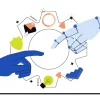WordPress is most commonly known as a platform for blogging and content management. However, for small businesses without an existing website presence, it is one of the easiest ways to get something up quickly while you embark on a more in-depth website design. It is also an option for businesses that don’t really benefit from an expensive website investment but would like at least some semblance of an online presence for informational purposes. Maintaining your WordPress website is easy; however, it can be time consuming if you don’t have a streamlined process in place. It’s important to learn the various functions of WordPress, so that you can easily maneuver around the platform when you need to make updates to your website.
WordPress has thousands of possible themes, which means that you can – and may be tempted to – change the design of your site at will. Try to avoid changing it too frequently as consistency is key to brand recognition. Take the time to peruse the various design elements prior to getting started, so that once you’ve decided on a theme, you can stick with it.
It is also imperative to take the time to learn the various plug-ins when you set up your website. Because WordPress is all about usability, the plug-ins are easy to install and can significantly increase functionality. Plug-ins are meant for everything from photo inclusion to search engine optimization (SEO) to social media sharing. Use them not only to ensure that your site is easy to access, but also to enhance searchability. It’s important to note that search engines do look at WordPress sites favorably because the content is generally updated more frequently. So, if you optimize your site effectively and continuously upload fresh content, you should see results from increased visibility.
Take the time to ensure that plug-ins that you opt for add efficiency. Too many plug-ins will ultimately slow down your website and could even compromise the security of it.
Back up your WordPress website as part of a larger maintenance routine. If something goes wrong during maintenance, you will at least have a recent version to which to restore your site until you figure out what happened. WordPress makes it easy with a plug-in that does this automatically, based on the frequency in which you want backups to occur (monthly is ideal).
Comb through your WordPress website every time you maintain it to find dead links or outdated content. Even if your website is not the primary source of information for your business, it is another source of information. Take care to ensure that the content makes any conversions you do garner easy for visitors.















